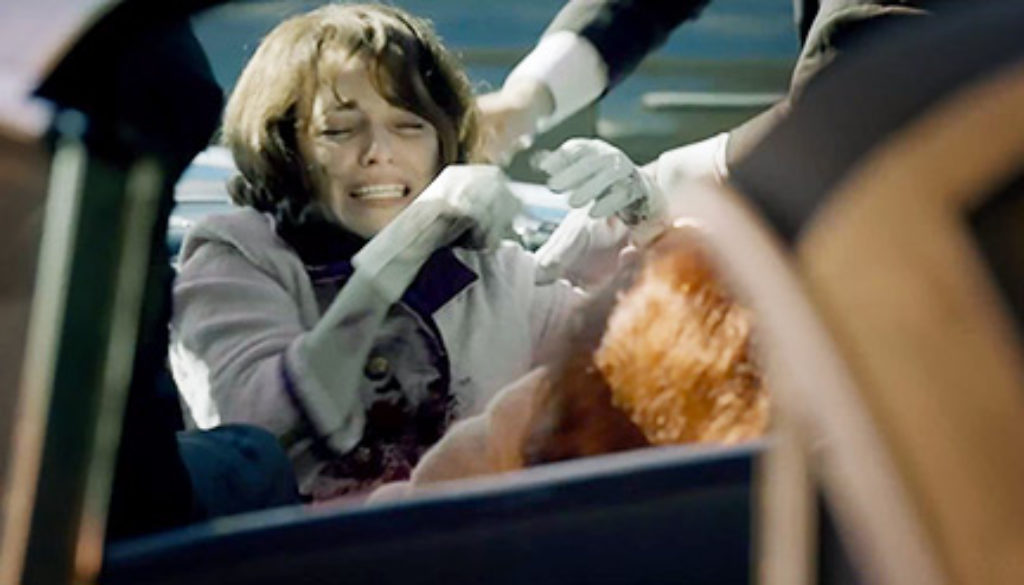
Few Americans older than 5 on Sept. 11, 2001, are unable to recall where they were when they first heard the news that a plane had crashed into the World Trade Center. The same can be said concerning Jan. 28, 1986, when the Space Shuttle Challenger broke apart 73 seconds into its flight. And 50 years ago, the assassination of President John F. Kennedy was yet another of those historically defining moments that explosively jolted the American psyche, gathering family and friends around the television—in that instance, to catch the latest from news anchor Walter Cronkite.
Parkland (a title that refers to Parkland Memorial Hospital, where Kennedy was taken after the shooting) attempts to go behind the news and the televised scenes to tell several stories about those most immediately and intimately affected by the tragic events of Nov. 22, 1963.
Parkland does not attempt to tackle a single conspiracy theory; here Lee Harvey Oswald operates alone. It sheds no further light on the Warren Commission’s findings. Jack Ruby is given mere seconds of screen time. And what’s more, JFK himself isn’t really the focus. Even Jacqueline Kennedy is observed primarily through her grief and silence as she watches helplessly while medical staff try to revive her husband.
Moviegoers are instead taken to Dealey Plaza for the presidential motorcade … where a garment manufacturer, Abraham Zapruder, excitedly searches for a primo spot from which to shoot 8mm footage of his beloved president. Then shots ring out, and it’s a speedy trip to the Parkland Memorial Hospital emergency room … where Dr. Charles Carrico, Nurse Doris Nelson and the rest of the medical staff do everything they can.
We see Secret Service Chief Forrest Sorrels’ world get rocked because the president was lost on his watch. We observe two prominent FBI agents second-guess themselves as to whether they could have possibly prevented the tragedy. (They had a file on Lee Harvey and knew he was a loose cannon ever since he’d returned from Russia.) We witness the backstory of—and feel the weight of the future for—Robert and Marguerite Oswald, Lee’s brother and mother respectively.
Without saying a word, Jackie conveys her love for her departed partner when she slips off her wedding ring and gently places it on one of John’s little fingers. Lyndon Johnson shows his support by refusing to leave for Washington without Jackie and the body of her husband.
Robert Oswald’s struggle to carry on a normal life is moving, if sad. At the Dallas jail, he receives unsolicited advice from a law enforcement officer to change his name, then pack up and move, but he refuses to flee. Robert chastises Lee Harvey for ruining his kids’ lives.
It almost goes without saying that the film deems the efforts of the hospital staff heroic … and the assassination itself an indefensible act.
A priest is quickly called into the ER to read Last Rites. There, Jackie is seen with folded hands, praying. Nurse Nelson retrieves a crucifix she keeps in her locker; the icon is then placed upon Kennedy’s body and later atop his coffin in Air Force One.
Knowing the wrongness of his deed, an FBI agent recites a “Hail Mary” as he burns up his Oswald file in a men’s room.
None.
Blood is seen everywhere in the ER when JFK is brought in, and again after Oswald is shot by Ruby. Physicians and nurses all have blood somewhere on their bodies. Some of them have gore all over their arms, well past their elbows. Jackie is bloodied, and she hands someone splattered brain matter. Scenes of Secret Service agents routinely show them wearing blood-drenched clothing. Although we never see a full-on facial shot of John Kennedy, we see a gruesome head wound. The Zapruder film is never seen directly, but we do get glimpses of it in Zapruder’s glasses as he watches it for the first time.
One f-word and four or five s-words. God’s name is abused a dozen times, often paired with “d‑‑n.” Jesus’ name is misused six times. Milder profanities include “son of a b‑‑ch,” used at least twice.
Doctors and nurses smoke cigarettes, as do reporters, FBI agents, other law enforcement personnel and various folks on the street. Ashtrays are often full. A pack of cigarettes sits on the dashboard of a car.
Marguerite Oswald voices her opinion that Lee Harvey was heroic. (Robert tells his mother to “shut up.”) While in the emergency room, a medical staffer cuts away at Kennedy’s clothing, revealing skin. (When he begins to cut away his underwear, he’s quickly rebuked.)
It’s now been 50 years since that dreadful day in November when the 35th president of the United States of America was shot dead in Dallas. Which means there are literally millions of people on the planet whose “memory” of the event relies only on something they read in a text book or saw in a movie … like this one.
Sadly, Parkland struggles to give viewers a reason to care about most of the people it places onscreen, especially the president. Instead, we’re provided with litanies of cold, hard facts about the behind-the-scenes happenings. Do we care? We’re supposed to, but it’s difficult to wedge emotion into the rapid-fire mini-story details.
It’s also difficult to warm up to a film that blithely recounts so many instances of blatant disrespect for Jesus’ name, and additionally proffers an f-word and other vulgarities. The blood and violence are obviously part and parcel with a story revolving around murder, as this one is. But with multiple scenes in an ER that resemble the “backroom of a butcher shop,” as Mick LaSalle put it in the Houston Chronicle, families looking for a history lesson might want to stick with those text books I mentioned earlier.
